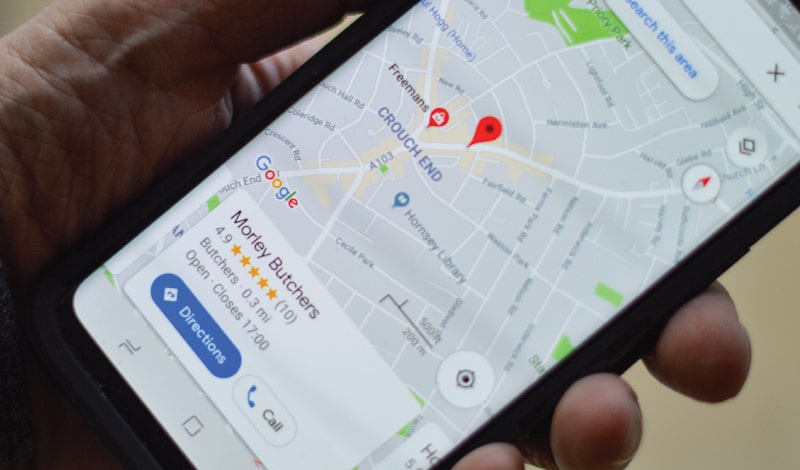
How to get more customer reviews for your business
Online reviews are seriously important to your business. Having positive reviews is a huge trust signal to potential customers that your brand is legitimate and will provide the service or product it says it will.
Your Google My Business reviews also play a meaningful role in SEO, particularly local search rankings – helping you get found by more people.
Do people really read reviews?
According to BrightLocal’s ‘Local Consumer Review Survey’:
- 86% of consumers read reviews for local businesses
- 91% of 18-34-year olds trust online reviews as much as personal recommendations
- Consumers read an average of 10 online reviews before feeling comfortable trusting a business
More than this, research conducted by the Spiegel Research Center also uncovered that the purchase likelihood for a product with 5 reviews is around 270% greater than a product with none.
Convinced yet?
To help your business demonstrate trust and encourage new customers to jump on board, let’s look at a few simple ways you can boost your online reviews.
Create multiple opportunities to leave reviews
The secret to getting customers to leave reviews is to make it as easy as possible for them to do so. This means offering a range of different review options at various points in the purchase cycle.
Let people leave reviews on the platform of their choice, when they feel comfortable, which might be immediately after purchase or once a project is wrapped up.
As Google reviews can impact your local search rating, Google My Business is definitely a platform you should be directing your customers to.
Depending on your industry and target market, you should also consider directing traffic to platforms like Facebook, Yelp, TripAdvisor and other review sites relevant to your industry.
Incentivise reviews
People value their time, so it’s important to give them good reason to leave you a review.
Think about what you could offer your customers to entice them to write about you. It could be anything from a discount on a future purchase, an entry into a competition, or a gift card.
Ask for reviews at the right time
According to BrightLocal’s Local Consumer Review Survey, 70% of consumers will leave a review if they are asked to. With this in mind, you’ll want to be careful about who and when you ask for a review. If a customer has just had a negative experience with your brand, the review will almost definitely reflect negatively on your business.
On the other hand, requesting a review directly after checkout probably isn’t the best time either. Unless the customer has used your product before, they haven’t had the chance to experience it yet and are unlikely to leave a meaningful review.
When planning your review request strategy, consider approaching your customers at the happy moments of their journey such as when they re-fill an order, when they tag you on social media, when they refer you to a friend or when you know they’ve had a positive experience.
Make it easy to leave you reviews
Your customers are doing you a favour when they leave your business reviews, so you’ll want to make it straightforward for them to do so.
For instance, if your customers hang out on Facebook then it might be a good idea to send them a review request on Messenger. If you keep in contact with them via email, then maybe you’ll send them a link via email to review you on Google My Business.
Think about where your customers interact with you the most and utilise this platform to generate more reviews.
Be clever about how you ask for your reviews
When asking your customers to leave a review, it pays to first gauge their level of satisfaction.
Consider asking questions like “How much do you love [your product]?” or “Would you like to re-order [your product]?” before asking them to rate and review you.
This is useful in that it can give you insightful information about how to improve your product and service while helping you to avoid negative reviews from those who didn’t quite love what they received.
Respond to negative reviews
As a business, it’s near impossible to be perfect all the time; mistakes happen, and your customers will take note of how you respond to them.
If and when you do receive a negative review, be sure to respond to it in a way that aims to solve the problem. Customers understand that you are only human and will respect your business for trying to offer a resolution.
Surveys have shown that businesses who respond to negative reviews end up receiving a higher overall rating than businesses who ignore or hide them.
Share reviews from happy customers
Positive reviews breed positive reviews. To make the most of any positive feedback your business receives, try sharing them on social media and mark them as helpful on your review platform so more people can find them.
Ask in person where you can
Particularly for B2B, asking for a review in person can be more effective than sending an email. First, have a chat with them about their experience with you and any positive feedback they might have. This will improve the likelihood of receiving only positive reviews.
If they seem happy with your work, you can then follow up with an email referring to your previous chat and providing a link to leave you a review.
With reviews becoming a key driver for not only your reputation, but the likelihood and quantity of customer purchases, having a strong review strategy is essential. How could you integrate some of these tactics to improve your online reviews?
